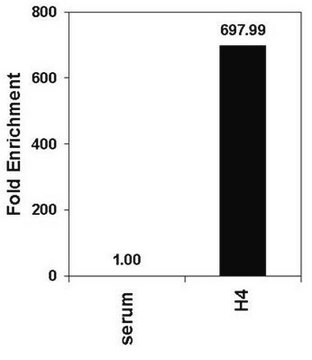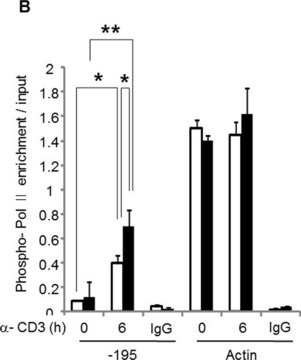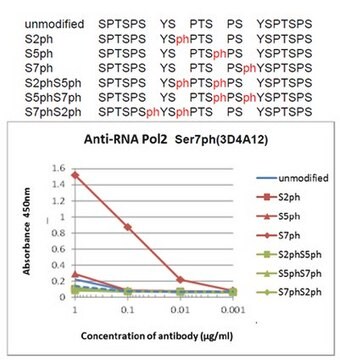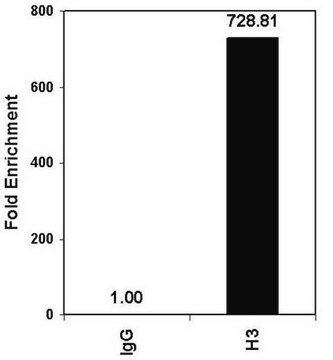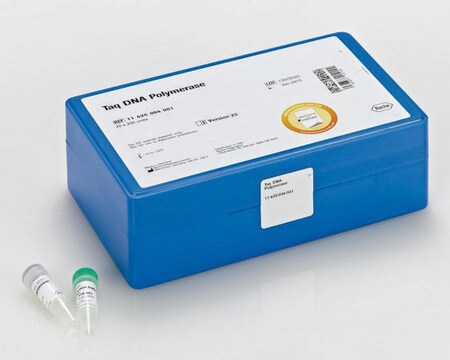17-620
ChIPAb+ RNA Pol II - ChIP Validated Antibody and Primer Set
from mouse
Synonyme(s) :
Chip Antibody and primer set, DNA-directed RNA polymerase II subunit RPB1, RNA polymerase II, RNA polymerase II ChIP
About This Item
Produits recommandés
Source biologique
mouse
Niveau de qualité
Clone
monoclonal
Espèces réactives
rat, Saccharomyces cerevisiae, mouse, human
Fabricant/nom de marque
ChIPAb+
Upstate®
Technique(s)
ChIP: suitable
immunofluorescence: suitable
immunoprecipitation (IP): suitable
Isotype
IgG1
Numéro d'accès NCBI
Numéro d'accès UniProt
Conditions d'expédition
dry ice
Description générale
The ChIPAb+ RNA Pol II set includes the RNA Pol II antibody, the negative control antibody (mouse IgG), and qPCR primers flanking the human GAPDH promoter, yielding a 166 bp product. The RNA Pol II and negative control antibodies are supplied in a scalable "per ChIP" reaction size and can be used to functionally validate the precipitation of RNA Pol II associated chromatin.
Spécificité
Immunogène
Application
Epigenetics & Nuclear Function
Chromatin Biology
3T3 nuclear extract was resolved by electrophoresis, transferred to nitrocellulose and probed with anti-RNA polymerase II (0.1 μg/mL). Proteins were visualized using a goat anti-mouse secondary antibody conjugated to HRP and a chemiluminescence detection system (Please see figures).
Conditionnement
Qualité
Description de la cible
Forme physique
Normal Mouse IgG. One vial containing 25 ug of mouse IgG in 25 μL volume. Store at -20°C.
Control Primers p21. One vial containing 75 μL of 5 μM of each primer specific for a region of the human GAPDH promoter. Store at -20°C.
FOR: TAC TAG CGG TTT TAC GGG CG
REV: TCG AAC AGG AGG AGC AGA GAG
CGA
Stockage et stabilité
Remarque sur l'analyse
Included negative control antibody mouse IgG and control primers specific for human GAPDH.
Informations légales
Clause de non-responsabilité
Code de la classe de stockage
10 - Combustible liquids
Certificats d'analyse (COA)
Recherchez un Certificats d'analyse (COA) en saisissant le numéro de lot du produit. Les numéros de lot figurent sur l'étiquette du produit après les mots "Lot" ou "Batch".
Déjà en possession de ce produit ?
Retrouvez la documentation relative aux produits que vous avez récemment achetés dans la Bibliothèque de documents.
Notre équipe de scientifiques dispose d'une expérience dans tous les secteurs de la recherche, notamment en sciences de la vie, science des matériaux, synthèse chimique, chromatographie, analyse et dans de nombreux autres domaines..
Contacter notre Service technique

